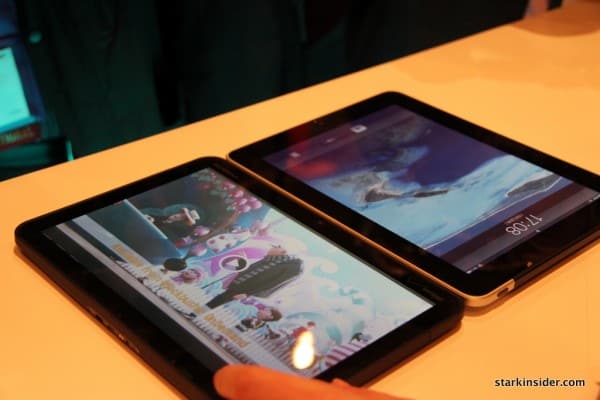
There’s two ways to look at the recent headlines concerning Samsung’s reporting of its tablet sales. One is to suggest that Samsung did not sell as many 7-inch Tabs as once suspected. In fact, far less than the widely reported 2 million unit figure — at least if you’re counting end consumers as ultimate sales. Maybe Samsung did clearly stipulate these were shipped units only or maybe the tech press just got it wrong and jumped on the Android-is great-bandwagon (which we’ve done more than once ourselves) without doing its due diligence.
Either way the Samsung Tab is not selling as well as first reported by the media.
Computerworld wrote: “Android tablets sales skyrocket, a clear sign that they’ll dominate the iPad.”
According to some stories yesterday Android had shaved 22% off Apple’s market share in just six weeks.
Strategy Analytics estimated in a report that the Apple iPad now only controlled 75% of the market. And that seems patently ridiculous to me — granted, they mostly operate from publicly available information including reports from Samsung which turned out to be misinterpreted (see WSJ retraction, “quite small” wrongly used in place of “quite smooth”). Based on that figure it would mean at least 1 out of every 4 people that owns a tablet own either a Galaxy Tab or some other Android-powered device. While obviously not scientific the eyes don’t lie. Next time you’re on a plane do a quick visual survey. Or at your local Starbucks see how many non-iPad tablets there are out there (amidst our increasingly super grande-sized world). Chances are the real market share number — 95% — will feel right. Sure, it’s anecdotal, but sometimes the — guess who? — eyes have it.
But the other perspective here is the reaffirmation of the unassailable lead that Apple has managed to gain with the iPad in a significant market, and one that appears to be only increasing in size.
Where is the competition?
At CES we saw never-ending headlines about upcoming tablets, most driven by the white-hot Android OS. No doubt they will eventually show. You have to wonder though when else in the history of technology has one company achieved such a wide, early lead in market share. Apple launched the iPad about this time last year. By the time the most likely competitor such as the Motorola Xoom hits store shelves, the second gen iPad will be just around the corner.
The other concern I have about Android on the tablet is the focus on hardware specs.
I’m all for amped-up iron, but at the end of the day isn’t it the user experience that matters most? Yes, Honeycomb looks great, and I think it will be a success. There are, however, several missing pieces in the Android bid for the mainstream consumer. I’ve said before that Google needs an answer for iTunes. I still believe that to be the case. Also, there are only a handful of apps on Android Market optimized for tablets. In my view, both of these things surely need to change if Android is to legitimately threaten iPad for market supremacy.
Just like smartphones, price may be the ultimate competitive differentiator for Android tablets.
That would likely be a strong move thanks to the open, license free model Google has adopted. The results don’t exactly bear that out in the marketplace… yet. The Samsung Tab was priced around $600 originally, and early reports have the Moto Xoom at approximately $700 (contract free). With the iPad starting at $499, why would consumers pay more for Android?


